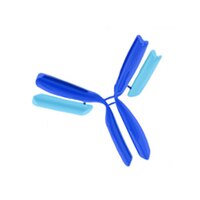TorsinB--perinuclear location and association with torsinA.
Hewett, Jeffrey W, et al.
J. Neurochem., 89: 1186-94 (2004)
2004
Zobrazit abstrakt
The torsins comprise a four-member family of AAA+ chaperone proteins, including torsinA, torsinB, torp2A and torp3A in humans. Mutations in torsinA underlie early onset torsion dystonia, an autosomal dominant, neurologically based movement disorder. TorsinB is highly homologous to torsinA with its gene adjacent to that for torsinA on human chromosome 9q34. Antibodies have been generated which can distinguish torsinA and torsinB from each other, and from the torps in human and rodent cells. TorsinB (approximately MW 38 kDa), like torsinA ( approximately MW 37 kDa), is an N-glycosylated protein and both reside primarily in the endoplasmic reticulum (ER) and nuclear envelope in cultured cells. Immunoprecipitation studies in cultured cells and human brain tissue indicate that torsinA and torsinB are associated with each other in cells. Overexpression of both wild-type torsinB and mutant torsinA lead to enrichment of the protein in the nuclear envelope and formation of large cytoplasmic inclusions. We conclude that torsinB and torsinA are localized in overlapping cell compartments within the same protein complex, and thus may carry out related functions in vivo. | 15147511
 |
TorsinA in PC12 cells: localization in the endoplasmic reticulum and response to stress.
Hewett, Jeffrey, et al.
J. Neurosci. Res., 72: 158-68 (2003)
2003
Zobrazit abstrakt
Most cases of early-onset torsion dystonia are caused by deletion of GAG in the coding region of the DYT1 gene encoding torsinA. This autosomal dominant neurologic disorder is characterized by abnormal movements, believed to originate from neuronal dysfunction in the basal ganglia of the human brain. The torsins (torsinA and torsinB) are members of the "ATPases associated with a variety of cellular activities" (AAA(+)) superfamily of proteins that mediate chaperone and other functions involved in conformational modeling of proteins, protection from stress, and targeting of proteins to cellular organelles. In this study, the intracellular localization and levels of endogenous torsin were evaluated in rat pheochromocytoma PC12 cells following differentiation and stress. TorsinA, apparent MW 37 kDa, cofractionates with markers for the microsomal/endoplasmic reticulum (ER) compartment and appears to reside primarily within the ER lumen based on protease resistance. TorsinA immunoreactivity colocalizes with the lumenal ER protein protein disulfide isomerase (PDI) and extends throughout neurites. Levels of torsinA did not increase notably in response to nerve growth factor-induced differentiation. None of the stress conditions tested, including heat shock and the unfolded protein response, affected torsinA, except for oxidative stress, which resulted in an increase in the apparent MW of torsinA and redistribution to protrusions from the cell surface. These findings are consistent with a relatively rapid covalent modification of torsinA in response to oxidative stress causing a change in state. Mutant torsinA may interfere with and/or compromise ER functions, especially in dopaminergic neurons, which have high levels of torsinA and are intrinsically vulnerable to oxidative stress. | 12671990
 |










